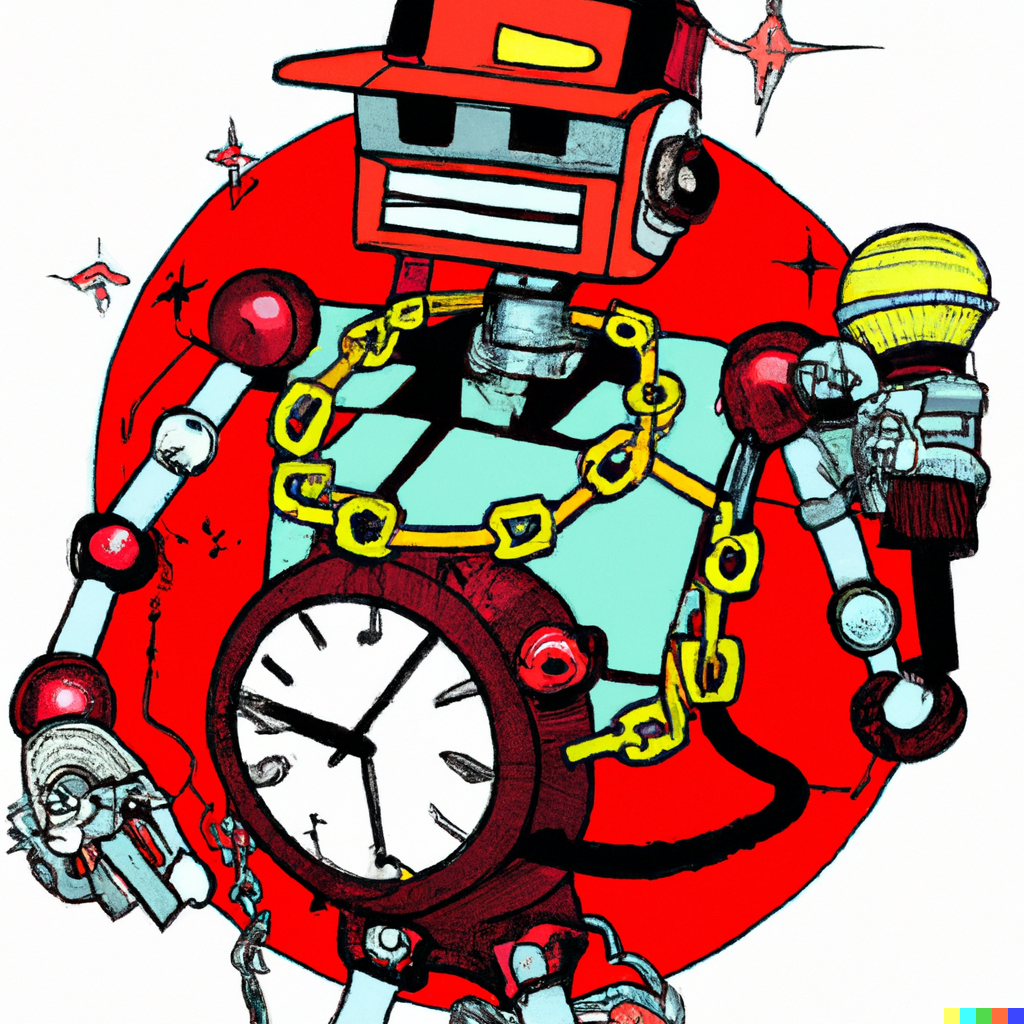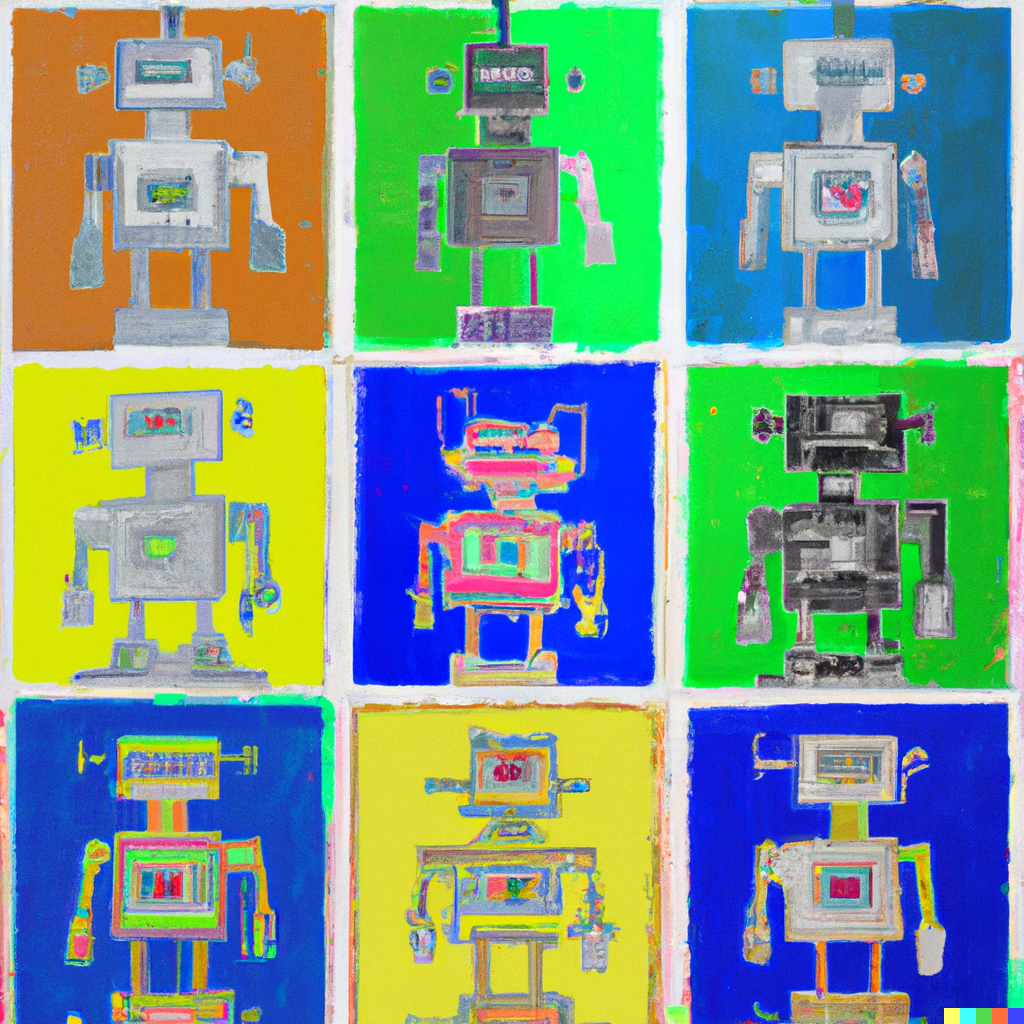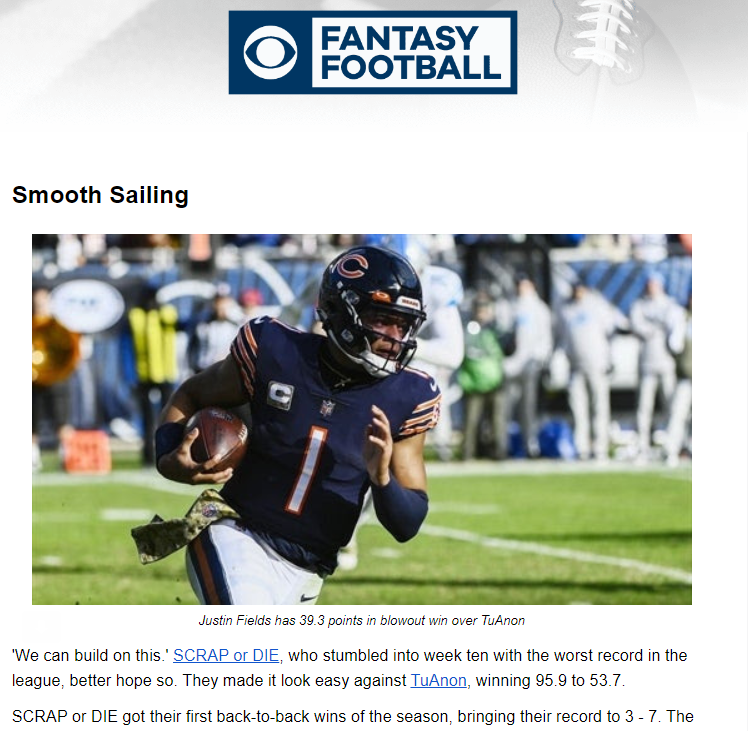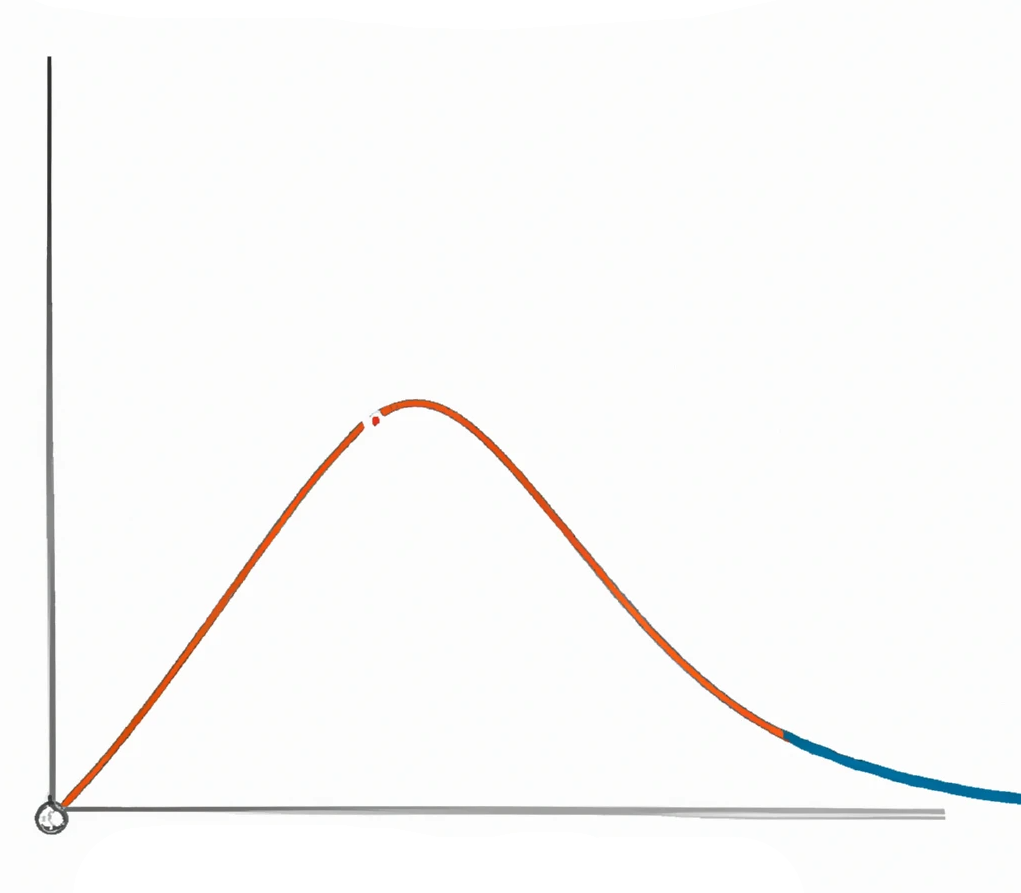
Why You Should Use Intelligent Reporting and Skip the Templates
When it comes to creating automated content, using a heavily templated approach is very enticing. It allows you to quickly set up new content and make sure that the final narratives very closely follow the outline that you set up. I call this a ‘Mad Libs’ approach, since it follows the same basic structure of the kids game, where the blank words in templates are filled in with specific details. Many companies in the Natural Language Generation space have made use of this approach, often thinly papering over their templates by adding a few basic options or paraphrases.
Having watched this industry for over ten years, I’ve seen how a huge percentage of these projects (and the companies connected to them) have failed. So often, it is because template-based approaches have hidden problems that are not apparent to non-experts at first glance.
Before diving into those hidden problems, let’s first establish the alternative to templates- intelligent narratives. Rather than using templates, these narratives are built by: (1) going through data to figure out what the most interesting stories are, and then (2) allowing the most interesting stories to self-assemble into a well-structured narrative. This has the huge advantage of ensuring that all the most compelling content finds its way into the final narrative. While templates wedge the data into the narrative, intelligent reporting builds the narrative around the data.
Sounds way better, right? But then why do some companies try the templated approach? That’s where template’s ‘hidden’ problems come into play. When comparing a single templated report with an intelligent narrative, the template will often not look that much different. In particular, the templated report will seem to do a good job hitting on the ‘main’ points (what was up, down, etc.).
The real problems happen over time, as people read more versions of the templated content and realize they are all fundamentally the same. This causes readers to (1) worry that they aren’t getting the full story, and (2) get tired of having to read through words just to get to the same pieces of data.
Narratives Are Not Predictable

If you have a big data set, the number of possible interesting stories you could write about that data is nearly endless. Which stories will wind up being the most interesting (the ones you will include in your narrative) cannot possibly be known in advance.
Take a football game, for example. Sure, the final score and the teams’ records are pretty much always going to be relevant, but beyond that, it’s chaos. You might have a game where there was a huge comeback, so the flow of scoring over the course of time is the key story. In another game, it was a blowout from the start and the key story is about a player’s stellar statistics. Or, the key story could be the revenge factor a team has after having been eliminated from the playoffs by their opponent in the previous year. I could go on, but you get the point- there is no way to write a template for all these possibilities.
Essentially, templates have to be built to talk about the types of things that always occur. One team wins; one team loses; the winning team’s record is now X; the losing team’s record is now Y; etc. However, it’s the things that rarely happen that are actually the most interesting to the reader. This goes for sports, sales figures, stock movements, you name it. Templates are therefore ironically built to show the exact information that is the least compelling to the reader.
There's A Reason We Don't Like 'Robotic' Writing

On top of doubting that they are getting ‘the real story’, readers having to repeatedly slog through the same information in the same arrangement over and over again will soon be begging to just see the data! This is because the words in a templated report are not actually adding any real information compared to the way they are in a flexible, intelligent narrative.
The idea that words are the key to helping people understand information stems from a fundamental misunderstanding of where the power of narratives comes from. There are two main advantages of a narrative when compared to raw numbers: (1) the ability to include or exclude certain information, and (2) the ability to arrange that information into main points, counter-points, and context. Wrapping words around the exact same set of data points in every report will not realize either of these advantages.
Fundamentally, good reporting is about synthesis, not language. In fact, intelligent reports can use very little language (as in infographics) and still convey a great deal of easy-to-digest information. Without intelligent synthesis, you are better off just giving readers the key pieces of data and letting them piece together the stories themselves.
[Quick note: both this problem and the problem of missing key information are most applicable to situations where end users are reading multiple reports. It is possible you could have a use case where people are only going to read the templated report once. In my experience, however, that circumstance is rare due to the amount of work that needs to be done to set up automated reporting. You typically have to merge your data into the automated reporting system, set up the reports (which take a decent amount of time even if you are using a template), and then set up a distribution system. It’s rare for this procedure to pencil out in use cases that don’t involve readers encountering multiple reports, either because they are getting multiple reports over time (e.g. a weekly recap) or seeing reports on different subjects (e.g. reports on different sales team members).]
Starting Over Next Time
Given the large initial investment in data integration, companies are often interested in applying their automated reporting capability to new, related use cases. In this very likely circumstance, you are much better off having built out your content with flexible intelligence rather than templates. Let’s examine why that is by looking at two different scenarios.
In Scenario #1, you’ve invested in building out an intelligent Generative AI system that synthesizes your data and turns it into compelling, insightful reports. In Scenario #2, you took a shortcut and built out a template-based reporting system. The good news is that in both scenarios you will be able to quickly adapt your narrative generation technology to your new use case.
The bad news, if you are in Scenario #2, is that your new reporting will have all the drawbacks that are inherent to a Mad Libs approach, since you will simply be building a brand new template from scratch. If you built an intelligent system, however, you would be able to apply the already-built intelligent components to the new use case. This reshuffling typically takes the same amount of time that it would take to build a template. Essentially, by building intelligence instead of templates, you can quickly expand quality content at the same rate that you can expand cookie-cutter templates.
In Conclusion
Investing in quality content is going to cost more than a templated approach, and the benefits will not be obvious at the beginning. Over time, however, templates provide little to no value, while intelligent reporting will prove its worth. Trust me on this one: leave the Mad Libs to the kids.

infoSentience's automated content today is the worst you will ever see it. That will be true if you are reading this article on the day I published it, and will also be true if you are reading it a year later. Why is that? Simple- every day, our content is doing one of two things: (1) staying the same, or (2) getting better. The ‘staying the same’ part is pretty straightforward, as our software will never get tired, make mistakes, need retraining, decide to change jobs, etc. On the other hand, we are constantly making improvements, and each of those improvements establishes a new ‘floor’ that will only get better. I call this the ‘improvement ratchet’ since it only moves in one direction- up! There are three key ways that automated content gets better over time:
- Improving Writing Quality
- Expanding the Content
- Better Audience Targeting
Improving Writing Quality
The most straightforward way that our automated content improves is by teaching our software how to write better for any particular use case. One way we learn is through feedback from our clients, as they see the written results and suggest changes or additional storylines. Another set of improvements comes from the iterative dance between the system output and our narrative engineers. When you give software the freedom and intelligence to mix content in new ways you sometimes come across a combination of information that you didn’t fully anticipate. For example, let’s look at this paragraph:
Syracuse has dominated St. Johns (winning 13 out of the last 17 contests) but we’ll soon see if history repeats itself. Syracuse and St. Johns will face off at Key Arena this Sunday at 7:00pm EST. St. Johns has had the upper hand against Syracuse recently, having won their last three games against the Orange.
This paragraph works reasonably well, but the specific combination of the first and third stories aren’t tied together as well as they could be. In this case, the final sentence (about St. Johns dominating recently) would be improved by incorporating the information from the first sentence (about Syracuse having a big advantage overall). The updated version of the last sentence would read like this:
Despite Syracuse’s dominance overall, St. Johns has had the upper hand recently, having won their last three games against the Orange.
This improvement is an example of what we call an ‘Easter Egg’, where we add written intelligence that is targeted to an idiosyncratic combination of events. Our reports contain hundreds of possible events adding up to millions of possibilities. Adding intelligence to these events allows them to combine together properly and avoid repetition. However, there’s no way to build out specific language for all possible interesting combinations in advance. As we read actual examples we come across unique, interesting combinations. We can then add specific writer intelligence that covers these combinations to really make the reporting ‘pop’.
Critically, this intelligence is usually a bit broader than just a simple phrase that appears in only one exact combination of events. In the example above, for instance, we would add intelligence that looks for the contrast between a team’s overall record against an opponent and their recent record and allow that intelligence to work in any such situation. We also need to make good use of our repetition system to make sure that all these Easter Eggs don’t start tripping over themselves by repeating information that was already referenced in the article.

Expanding the Content
Another way that content improves is by quickly expanding into similar use cases. For example, when we started with CBS we only provided weekly recaps for their fantasy baseball and football players. We soon expanded to offering more fantasy content: weekly previews, draft reports, year-end recaps, and more. Because those were successful, they then asked us to provide previews and recaps of real-life football and basketball games. We quickly added soccer, and then expanded the range of content by also providing gambling-focused articles for each of those games.
This same story has played out with many of our other clients. One of the big reasons for this is because automated content is so new that it’s often difficult to grasp just how many use cases it has. After seeing it in action, it’s much easier to imagine how it can help with new reporting tasks.
The other big reason that automated content often quickly expands is because the subsequent use cases are often cheaper to roll out due to economies of scale. There are three main steps to generating automated content:
- Gather data
- Create the content
- Deliver it
Each of these steps is usually much easier when rolling out follow-up content. In the case of Step #1, gathering data, it is sometimes the case that literally the exact same data can be used to generate new content. This happened when we expanded from general previews to gambling-focused previews for live sports games, which just emphasized different aspects of the data we were already pulling from CBS. Even if there are additional data streams to set up, it’s usually the case that we can still make use of the original data downloads as well, which typically reduces the amount of set up that needs to take place.
When it comes to Step #2, creating the content, infoSentience’s ‘concept based’ approach pays big dividends. Instead of creating Mad-Lib style templates, infoSentience imparts actual intelligence into its system. That allows the system to be flexible in how it identifies and writes about the most important information in a data set. It also means that it can quickly pivot with regard to things like: the subjects it writes about, the time periods it covers, the length of the articles, the way it adds visualizations, the format of the report, the importance of certain metrics and storylines, and many more. Entire new pieces of content can often be created just by turning an internal ‘dial’ to a new setting.
Finally, for Step #3, there is usually a tremendous amount of overlap when it comes to the delivery process for follow-up content. Typically, we will coordinate closely with our clients to set up an initial system for delivery. This might entail dropping our content into an API ‘box’ that our clients then access, but other times we send out emails ourselves or set up a web site to host the content. We might also set up a timing system to deliver content on demand or at particular intervals. It is often the case that these exact same procedures can be used for follow-up content.
A great example of how all these steps came together is when we expanded to providing soccer content for CBS. In that case, the data pulldown and delivery procedures were identical, requiring no changes at all from CBS. While we did create some soccer-specific content, much of the sports intelligence for soccer was able to make use of the existing sports intelligence we had built into the system.

Better Audience Targeting
Finally, another way that automated content improves is from user feedback. Automated content allows for a level of A/B testing that would be impossible using any other method. I’ve already mentioned that our AI can change what it focuses on, its time periods, length, format, and more. It can also use different phrase options when talking about the same information, and even change the ‘tone’ that it uses. All of these options can be randomized (within bounds) when delivering content on a mass scale. It is a simple task to then cross-check user engagement with each of these variables to determine what the optimal settings are.
It's also possible to allow individual readers to customize their content however they want it. All of the ‘options’ mentioned above can be exposed to end users, allowing them to specify exactly what they want to see. This not only allows users themselves to improve the content they see, but also gives organizations a better understanding of the information that each of their customers really care about.
Conclusion
So much of our time in business and life is spent in a losing fight against entropy. Automated content provides a welcome break from that struggle. Set it up and enjoy great benefits from day one, knowing that the only changes that will ever take place are for the better.

[This post is the 2nd in a series of technical-focused articles exploring the challenges of using conceptual thinking to create written data analysis.]
Time is of the essence. This is true if you are in a hurry, but it’s also true if you are doing data analysis. Individual data values are almost always contextualized by looking at time-related events such as how much they have moved up or down, whether they are part of a trend, how high/low they are compared to past values, etc. Fortunately for human beings, manipulating time is something that comes easy to us. For example, if you know how to put together a monthly written report on a given topic, it would probably be quite obvious how to put together a weekly version of the same report.
For computers, however, this is not so easy, because they don’t think conceptually. Sure, software systems like Power BI and Tableau can show you the correct numbers for any given time period, but they don’t have the sophistication to think about any given time period, and this prevents them from giving you a time-flexible written synopsis.. Sophisticated, conceptual thinking is required because there are many (often subtle) difficulties when calculating and writing about time. In this post, I’m going to walk through some of those difficulties, and also show how a Conceptual Automata System (CAS) has the ability to navigate those difficulties.
Challenge #1 - What time periods are relevant?
Before trying to figure out how to manipulate time periods, a CAS needs to understand what time periods would even be relevant to a reader. For instance, an HR coordinator might be interested in a yearly high/low for a given metric, whereas a stock trader might be interested in the (slightly different) 52-week high/lows. A manufacturing VP, on the other hand, might care most about quarterly numbers, and so that would be set up as the default time period for their report. The best time period to contextualize information will almost always vary by use case. .
Furthermore, the CAS has to take into account whether certain time periods are relevant to certain analytical events, such as streaks or outlier changes. For example, it might be interesting to note that a stock’s increase for the day was the highest in six months. It would not make sense to note that same story for a quarterly time period, since that might only represent two periods. That said, it would be equally invalid to require a 180 period gap between noting outlier quarterly events. Therefore, you need to have a sliding scale that allows longer time periods to need fewer intervals between outlier events. Many other stories would need similar intelligence to customize their thresholds based on the time period (and use case).

Challenge #2 - What to compare to?
One of the most complicated time-related issues is determining what comparison to make when calculating how much a metric has changed. In the simplest situation, you have a metric (let’s say it’s a monthly figure) and you would compare it to the previous month. But let’s say you have a very seasonal metric- in that case you might want to compare it to the same month of the previous year.
This requires adding additional intelligence to each of your time-based ‘event’ stories. For instance, if you have a story about a metric increasing, that story cannot simply look to the previous item, but rather needs to seek guidance from its parent object to figure out what to compare it to. You also need to impart intelligence to stories such as trends or streaks to make sure they also are running year-over-year comparisons. Of course, all these changes also require alterations to how you would write about or visualize the stories.
Challenge #3 - Pure time periods versus current time periods
If, on September 15th, somebody tells you that a given metric is ‘down for the month’, what exactly does that mean? It could either mean that the metric is down through the first 15 days of the month, or it could mean that it has been down since August 15th. Both forms of measurement have applications, and often different use cases will favor one or the other. Stock traders, for instance, would likely care much more about the change over the previous 30 days, whereas a manufacturer might care more about how the current month has been trending. To be truly flexible, a CAS needs to be able to handle both these use cases, or even switch between both of them within the same report.
Challenge #4 - Aggregated vs. simple time periods
There are two different ways that smaller time periods can relate to larger time periods—as waypoints or as components. Compare a month’s worth of stock data versus a month’s worth of retail data. To answer the question ‘how did Apple stock change this month’ we would compare the first day of the month to the last day of the month. If we were asking the same question of a set of retail data, we would need to add all the days in the month and then compare the aggregate of all those data points to the aggregate of the previous month.
Dealing with aggregated objects is tricky because it is usually impractical to simply aggregate and sequence every possible time period in a data set, so you might start off by just creating, for example, a monthly aggregate of the overall information. But what if a user (or the CAS) wants to look at a subset of the data, such as a region in a set of retail data? The CAS must be able to generate an aggregated time object for each region. The only way to do that is to impart ‘self-assembly’ intelligence to each aggregated object, so that it knows how to take each component (such as each day of data) and merge them together to create a composite object that covers the entire time period.

Putting it all together
As complicated as some of these issues are, the real difficulty stems from the fact that each of the solutions to these problems needs to work independently. For example, let’s say you tasked the CAS with building a report on retail numbers for April 15th. The CAS would need to: (1) understand that a month-to-date report is more appropriate than a past 30 day report, (2) be able to automatically build an object composed of data from the first 15 days of April, (3) sequence that object along with all other ‘first 15 days’ objects (and their sub-components), (4) understand that the relevant comparison for this April’s partial month numbers is to the partial month of April of the previous year, and (5) be able to write and visualize the results of its analysis.
Not only must all of the time-based intelligence work well together, but you can’t limp over the finish line with a bunch of spaghetti code to make it work. This is because the ‘time’ dimension is just one of a whole series of independent dimensions that you need to get working, such as different subjects (or groups of subjects), metrics, user preferences, content length, formatting, visualizing, and others.
The good news is that once you get all of this working, you’ve unlocked the ability to quickly understand exactly what you need to know about any time period within your data. The CAS can even do things like give you a ‘last 4 days’ report when you come back from vacation. It can also use its fluidity in moving up and down time periods to easily add context to a report- contextualizing an annual report with how things have gone in the last month, for example. True flexibility over different time periods is a data analysis superpower that previously only humans had, but no longer.

Although Generative AI is making headlines every day, it is still a new concept to most people. Furthermore, Data Generative AI (DGA) is even less well known, so many of the people I talk to struggle to understand when it makes sense to make use of it. In this post, I’ll give a quick synopsis of what DGA is, then walk through some requirements you’ll need to have in order to implement it.
What is Data Generative AI?
Many people have recently become aware of the power of generative AI by looking at Chat-GPT. This is a system that has been trained using large language sets and can create written responses to written queries. DGA, in contrast, creates written reports out of large data sets. It analyzes the data, figures out what is most important/interesting and writes out its analysis in an easy-to-read narrative. In essence, Chat-GPT and other Large Language Models (LLMs) go from language 🡪 language, while DGA systems go from data 🡪 language.
In theory, this opens up all data sets to automatic AI analysis and reporting. In practice, there are technical and economic reasons that the current use of DGA can only be applied to certain kinds of data sets.
The five things you’ll need to make use of DGA are:
- Accessible Data
- Structured Data
- Complicated Input
- Complicated Output
- Significant Scale
Accessible Data
The first step that a DGA system takes when building a report is to ingest data. Since one of the main goals of using DGA is to automate reporting processes, it figures that the process of ingesting data has to be completely automatic as well. This means that you’ll need to have some way of automatically delivering your data to a DGA system. Typically, this means setting up an API with a private authentication key to allow the DGA to pull down data. However, there are other methods as well, such as sharing a flat file or giving access to an online spreadsheet such as Google Sheets or Office 365. If security is a concern, it could even be possible to build the DGA system using a sample data set and then transfer the program onto your servers so it could run without the data ever leaving your organization.
The good news is that while you might need to create a new access point for your data, you will rarely need to change the format or structure of how your data is stored. This is because all of the data coming into a DGA system needs to be manually placed into a conceptual hierarchy. This process takes the same amount of time whether you have one API with all of your information in JSON format, or 10 different data silos with a mix of formats. In fact, one of the great benefits of DGA is the ability to pull in information from anywhere and make it all understandable and accessible.
Structured Data
Accessing the data is only part of the equation, however. The other key requirement is that the critical data you want to analyze is ‘structured’ data. Determining what counts as ‘structured’ data is a bit tricky, so let’s go over an example. Here is a simple spreadsheet of stock data:

In this example, “Closing Price” is a perfectly structured piece of data. It has a clearly definable metric (Closing Price) that is represented by a number. This makes it really easy for DGA systems to work with it. Slightly less structured is the data in the “Industry” column. In this case, you have a text value that corresponds to all possible industries. Whether a variable like this would be considered structured or not typically comes down to: (1) how it will be used, and (2) how many different text options exist. If it is just as simple as having the system assign an ‘industry’ value to each company and group it with other companies that have that same industry, then this can be pretty easy. But imagine if there were 100 different industry types. In that case, you might want to assign each company a higher-level organizational value (like a ‘sector’) that comprises many industries. This might need to be set up manually as part of the data ingestion process. Furthermore, if you have many possible text values it’s likely that some of them might need spelling or grammar intelligence attached to them (such as whether they are singular or plural).
Looking at the "Name" column, we see an example of text-based information that is minimally structured for data purposes, but can be effectively used for labeling. You can’t use this text to derive substantive information about the company, but you can simply insert it into the narrative. Again, there might be complications with data like this because of grammatical issues.
Finally, we get to the ‘Notes’ column. Sentence and paragraph length text is the least structured data. Of course, the ability of AI to structure text is improving all the time. Things like sentiment analysis or word clouds can be effective ways to structure that data and integrate it into the narrative. In general, though, DGAI is called Data Generative AI for a reason, and so if any critical information is found in long-form text it is probably not a great candidate to get automated.

Complicated Input
You are generally going to need a lot of data to justify setting up a DGA system for the simple reason that if you don’t have a lot of information then you probably don’t need an automated system to analyze and synthesize it. Essentially, DGA is great at solving data-overwhelm, but that means you need an overwhelming amount of data.
Most of you reading this have probably already skipped to the next section, saying something along the lines of “yeah, having too little data is not my problem.” But, for those of you unsure if you have enough (and to get the wheels turning for the rest of you) it’s good to think about just how many different ways there are to have an ‘overwhelming’ amount of data.
Having a long sequence of data over time can easily make for a difficult analysis, particularly if placing the values of the current time period (such as this month’s sales data) into historic context is important. Another way that complexity can occur is due to the interaction of groups. For instance, imagine a single retail sale that occurs. That sale occurred in a particular location (that might have many levels- city, state, country, etc.), for a particular product (that might have a color, style, category, department, etc.), and sold to a particular person (that might have demographic information, sales channel info, marketing tracking info, etc.). All of these individual pieces of information might have interesting interactions, and the number of possible combinations can add up quickly.
Complicated Output
While you might have a lot of data, there is also the question of what type of reporting you need to derive from that data? It’s possible to have a tremendous amount of data that can be crunched down to just a few key metrics. In that case, you need algorithms that look through the data and crunch the numbers, but you don’t need DGA. DGA is used for synthesis, in situations where there are lots of things that are potentially interesting, but you want a story about just the most important ones.
Let’s illustrate this point using a football game. When the Dallas Cowboys play the New York Giants, a tremendous amount of data is generated. There is the play-by-play of the game, the total stats for each team, the total stats for each player, the history of the stats for each team and player, the upcoming schedule, the previous matchups between the two teams, and many more! Clearly, this amount of data satisfies the ‘complicated input’ requirement.
But let’s say that you only care about one thing- ‘who won the game?’. In that case, you don’t need a synthesis from DGA, since even though there was a huge number of things that happened, they can all be boiled down to the final score. But what if your question is ‘what happened in the game?’ In that case, you need DGA to parachute in and examine thousands of possible storylines and organize and write up just the most important ones. DGA works great in situations where thousands of things could happen, hundreds of things did happen, but you just want to read about the 10-15 most important events.
This example is also a good illustration of the importance of a narrative in telling a story. Modern dashboards are usually the equivalent of a ‘box score’ for a sporting event. It’s certainly interesting sometimes to go through a box score, but most people would much rather read a story about what happened in the game than read through the numbers and try to figure out what happened on their own.
Scale
DGA has to ingest data from your unique data sources, organize it into a conceptual hierarchy, create compelling content from it, and then format and deliver that content to particular end points. Unfortunately, all this takes a decent amount of up-front effort. That means that DGA doesn’t make a lot of sense unless you have a lot of reports you need built. Exactly how many reports depends on the value of each one, but it would typically be at least 1,000 over the course of a year (numbers of 1,000,000+ per year are not uncommon).
Often, people will ask me about automating a particularly onerous report within their organization that someone on their team has to put together every month. Unfortunately, if a report takes half of one employee’s time, that usually means that: (1) we’re not providing much value if we automate it, and (2) that report is really long and complicated, making it extra expensive to build out.
Instead, think about using DGA when you:
- Need a unique report to go out to a lot of individual readers
- Have many subjects within your data that you want separate reports on
- You want reports on your data to be continually updated
Or some combination of the three

You Can Do It!
Hopefully this guide gives you a good sense of exactly what you need to be a good candidate to apply DGA to your data sets. If your use case satisfies all five requirements then you can bask in the power of being able to create beautiful, insightful reports as often and at whatever scale you choose.

There are lots of tricky problems when it comes to generating high-quality automated reports, and repetition is one of the toughest. Repetition is a difficult problem for automated writing systems.
Do those sentences read well together? I’m guessing you probably think ‘no’. They seem pretty clearly repetitive, but that’s only obvious from a human perspective. From a computer’s perspective, however, it’s not so clear.
Why that is and how we can try to get around that will be the subject of this post. This one will (hopefully) be part of a series of posts where I go into a bit more detail about the technical challenges that underlie high-quality data-focused generative AI. A lot of these things are problems, like repetition, that are hard to even notice if you haven’t spent time in the AI trenches, as we don’t think twice about them as humans.
First, why is repetition even an issue in the first place? If you build automated reports using templates, it isn’t. That’s because you know exactly what stories are going to appear at each point in a narrative, so you can use the awesome repetition fighting powers of your human brain to make sure that the template avoids any repetition.
Using a template is severely restricting, however, because the template can’t flexibly adapt to the underlying data, and therefore can’t possibly report on the most important information that the reader needs to see. The best way to set up an automated report is to allow the system to individually identify each event within the data set and then build a narrative out of only the best parts.
However, once you’ve freed the software from templates and given it flexibility in how it arranges information, you’ve also summoned the Kraken that is repetition. To understand how tricky that problem can be, let’s paraphrase the pair of sentences that started this post:
There are lots of high-scoring wide receivers in the NFC, and DeAndre Hopkins is one of the best. DeAndre Hopkins is a good fantasy wide receiver.
We’d say this is repetitive because of the double mention of DeAndre Hopkins being a good receiver, but let’s look at it from a computer’s perspective. The first sentence is actually made of two parts: (1) identifying that there are many high-scoring WRs in the NFC, and (2) saying DeAndre Hopkins is good. The second sentence is just about DeAndre Hopkins being good. For software, these two sentences are not the same, since the first has two components and the second sentence has just one. Ah, you say, but what if we give software the ability to recognize each of the two subcomponents of the first sentence so that it can understand that it conflicts with the second sentence? Well, that’s a good idea in general, but it won’t save you in this case, because the two sentences in this example don’t even share the same sub-component.
The first sentence says that DeAndre Hopkins is ‘one of the best’ WRs while the second sentence merely identifies DeAndre Hopkins as being good. The issue here is that in order to get software to write these sentences you would need to build the capability to have it both identify a ‘good’ WR and also rank order them and identify some subset that would be considered a grouping of ‘the best’. These are two different operations, so the system would not inherently see them as being the same thing.
This is an example of a conceptual repetition problem, where there are two events or stories identified by an NLG system that are different (including involving different calculations and a different ‘trigger’) but are conceptually similar enough that it doesn’t make sense to include them both in the same report.

Building a conceptual hierarchy is the first step towards solving this problem. If the two stories above share some parent concept then the system can begin to recognize them as being duplicative. However, it’s not quite that simple, as many stories could share a parent while still being able to coexist in a narrative. For example, ‘team on a winning streak’ and ‘team on a losing streak’ could both share a ‘streak story’ parent, and yet could make sense in the same article (“The win is the third in a row for Team A, while the loss is the fourth in a row for Team B”).
That brings us to another problem with repetition: dealing with different objects referenced by the stories. Going back to the DeAndre Hopkins story, it’s duplicative to mention that he is both ‘one the best WRs’ and also that he ‘is a good WR’, but it wouldn’t be duplicative to mention that some other WR is good. That said, if you were talking about 5 different players, it might start to get repetitive to mention over and over again that each of them was ‘one of the best’ at their position.
Therefore, the conceptual hierarchy needs to be able to recognize, for any given pair of sentences, the conceptual ‘distance’ that each item is from the other. It can take into account the nature of commonalities between the events in both stories and also look at factors such as whether they are being applied to different objects (which themselves would have a ‘conceptual distance’ between them, e.g. WR is closer to RB than WR is to Team) and also the inherent repetition factor of a given story. Typically, events that are more unique (such as a player scoring their highest total in a stat for the season) are more prone to repetition concerns than something like a team winning or losing a given game, which is bound to happen. In the example above talking about five different WRs, it would sound repetitive to talk about each of them achieving a recent season-high in a stat, even if they were different stats. If you were giving a synopsis about the recent performance of five teams however, it wouldn’t feel as duplicative to mention the won/loss result of each team’s recent game.
Another aspect of ‘distance’ that is important is the distance between each sentence in a narrative or sequence of narratives. A sentence might seem a bit duplicative following directly after a very similar sentence, but might not seem repetitive at all coming two paragraphs later. This is a big potential issue with reports that are in sequence with each other, such as a stock report that goes out every day. There are some things that make sense to mention in each report regardless of whether they appeared the day before, such as the market being up a lot. Other things, such as a given stock having really good analyst ratings, would be tedious if mentioned every single day.
Having balanced all the above complicated issues related to repetition, you run smack dab into another huge problem- what if you WANT something to be repetitious. For example:
The Golden State Warriors weren’t even playing the same game with the Timberwolves on Friday, getting trounced 132-98. Not only did they get blown out, but the loss knocked them out of the last guaranteed playoff spot.
I think this paragraph reads well. However, if you look at the last sentence, it is composed of two parts: (1) team got blown out, and (2) team out of the playoffs. The first part, ‘team got blown out’ was just mentioned in the previous sentence. Therefore, the narrative generation system has to take into account another factor, which registers how a particular piece of information is being used within an article and whether that precludes, or in fact invites, one or more mentions of that same piece of information.

So, we’ve established that good narrative generation software has to balance:
- The conceptual distance between the ‘events’ behind any two sentences
- The conceptual distance between any objects identified in those sentences
- The inherent repetitiousness of each event in the sentences
- The distance between the two sentences within a narrative (or sequence of narratives) and the effect of that distance
- Whether that repetition is even a problem at all or rather is the whole point of the structural arrangement.
Each of these factors are independent dimensions, so they must all be able to be balanced simultaneously.
The worst part is, when it’s done right absolutely nobody notices! When the software creates a paragraph that contains three related sentences that somehow don’t step on each other, we take it for granted, since human brains are so exceptionally tuned to understanding conceptual overlap that we don’t even consciously recognize avoiding repetition as ‘thinking’ at all.
That’s the bad news. The good news is that effectively dealing with repetition has given infoSentience’s technology a big leg up against the competition. It’s not something concrete we can point to, but rather it allows for higher quality, more insightful content to be built in the first place. And while difficult, embedding this intelligence into software allows us to do things that can’t be done by humans. For example, we can personalize repetition for each individual reader in a sequence of reports. Instead of automatically ‘repping out’ a story that appeared in the previous report, we can check to see if an individual read the previous report, and if not, simply skip any repetition issues presented by the previous report. That’s just one of the many ways that automated content can go beyond human capability once you’ve been able to mimic human conceptual thinking.

In the olden days, if you wanted to send out a report to your employees, or an update to your clients, or a letter intended for prospective customers, you only had two options:
Option #1: Mass Communication
You create one piece of content and send this off to everybody. If it was a report, then everybody got the same report. If it was a letter to your clients, then every client got the same letter. This has the benefit of being cheap and fast, allowing you to reach as many people as possible. The drawback is that everybody gets the same content regardless of their particular circumstances.
Option #2: Custom Communications
Every client, potential customer, or employee gets content that is specifically written for them. This has the advantage of making the communication maximally effective for each end user. The cost of course, being that it takes time and money to create each communication. In many cases, it’s not feasible to send out a given number of narratives even with an outsized budget.
But what if you didn’t have to choose the least bad option? That is what’s possible with Mass Custom Communication (MCC), which takes the best parts of each option, allowing you to deliver insightful, impactful reports on a near infinite scale. But before we talk more about what MCC is, let’s talk about what it isn’t. MCC is not a form letter and it is not a ‘Mad Libs’ style narrative. We’ve all been the recipient of communications like that, and they barely register as being customized at all, let alone making us feel like they have been written just for us. This goes double if the narrative or report is part of an ongoing series of communications which all use the same template.
In order to create true MCC, you need two things: (1) a rich data set, and (2) Natural Language Generation (NLG) software that can truly synthesize that data set and turn it into a high-quality narrative. Let’s take these in order. First, you need a rich data set because you must have enough unique pieces of data, or combinations within that data, to write up something different for each end user. In essence, you need ‘too much’ information to fit into a template.
Once you have ‘too much’ information, you need high-quality synthesis from an AI NLG system. This system can go through thousands of data points to find the most relevant information for each end user. It then can automatically organize this information into a narrative with clear main points and interesting context, so that the end user is able to read something that feels unique and compelling to them. For example, a salesperson can get a weekly report that not only tells them about the top-line numbers for their sales this week, but also contextualizes those numbers with trends from their sales history and larger trends within the company.

Individual Outreach
A great example of the power of MCC comes from the world of fantasy sports. For those of you unfamiliar with how fantasy sports work, you and your friends each draft players within a given sport, and then your ‘team’ competes with other teams in the league. It’s sort of like picking a portfolio of stocks and seeing who can do the best.
People love playing fantasy sports, but because each team is unique, and because there are millions of fantasy players, people were never able to get stories about their fantasy league the same way that they get stories about the professional leagues. With the advent of MCC, suddenly they could, and CBS Sports decided to take advantage of it.
For the last 10 years, we’ve written up stories about what happened for every CBS fantasy team every week, creating game recaps, game previews, draft reports, power rankings, and many other content pieces, each with headlines, pictures, and other visual elements. This was actually infoSentience’s first product, so it is near and dear to my heart. We’ve now created over 200 million unique articles which give CBS players what we call a ‘front page’ experience, which covers their league using the same types of content (narratives, headlines, pictures) as the front page of a newspaper. Previously, they could only get a ‘back page’ experience that showed them columns of stats (yes, I realize I’m dating myself with this reference).

Critically, quality is key when it comes to making these stories work. Cookie-cutter templates are going to get real stale, real fast when readers see the same things over and over again each week. Personalization involves more than just filling in names and saying who won, it’s about finding the unique combinations of data and events that speaks to what made the game interesting. It’s writing about how you made a great move coaching AND how that made the difference in your game AND how that means you are now the top-rated coach in your league.
This type of insight is what makes for compelling reading. Open rates for the CBS weekly recap emails we send out are the highest of any emails CBS sends to their users. If you are sending out weekly reports to each of your department managers, or monthly updates for each of your clients, they have to be interesting or they’re not going to be read. If each report is surfacing the most critical information in a fresh, non-repetitive manner, then end users will feel compelled to read them.

Long Tail Reporting
Reports don’t necessarily have to be targeted at individuals in order to achieve scale. You might also just need to write a lot of reports using many subsets of your data. These reports might be targeted towards groups, or just posted onto a website for anybody to read. This might be better labeled Mass ‘Niche’ Communications, but it definitely falls under the MCC umbrella.
CBS has not only taken advantage of MCC for their fantasy product, but has also applied it to live sports. They leverage our automated reporting technology to supplement their newsroom by writing stories they otherwise wouldn’t have time for. Being one of the major sports sites in the US, they obviously have plenty of quality journalists. That still doesn’t mean that they are capable of covering every single NFL, NBA, college basketball, college football, and European soccer match, let alone writing up multiple articles for each game, covering different angles such as recapping the action, previewing the game, and covering the gambling lines.
That’s where our technology comes in. We provide a near limitless amount of sports coverage for CBS Sports at high quality. That last part is once again key. CBS Sports is not some fly-by-night website looking to capitalize on SEO terms by throwing up ‘Mad-Libs’ style, cookie-cutter articles. These write-ups need to have all the variety, insight, and depth that a human-written article would have, and that’s what we’ve delivered. For example, take a look at this college football game preview. If you just stumbled across that article you would have no idea it was written by a computer, and that’s the point.
Our work for IU Health is another example of this type of reporting. We automatically write and update bios for every doctor in their network, using information such as their education history, specializations, locations, languages, and many other attributes. We even synthesize and highlight positive patient reviews. Like with CBS, these bios would be too difficult to write up manually. There are thousands of doctors within IU’s network, and dozens come and go every month. By automating the bios, IU not only saved themselves a great deal of writing, but also made sure that all their bios are up to date with the latest information, such as accurate locations and patient ratings.
Your Turn?
If you are in a situation where you are either (A) not creating all the content you need because you don’t have the workforce, or (B) using generic reports/communications when you would really benefit from having a custom message, then hopefully this article opened your eyes to a new possibility. Mass Custom Communication allows you to have your cake and eat it too. Maybe your use case can be the one I talk about in the next version of this article.

[Note: All of the following concerns AI’s ability to write about specific data sets, something very different from ChatGPT-style natural language generators]
We all know the basics for why good writing is important in business. Decision makers want to read reports that are accurate, impactful, and easy to understand. With those qualities in mind, let’s take a look at this short paragraph:
Widgets were down this month, falling 2.5%. They were up the last week of the month, rising 4.5%.
Assuming the numbers are correct, the sentences would certainly qualify as being ‘accurate’. The metrics mentioned also seem like they would be ‘impactful’ to a widget maker. Is it ‘easy to understand’? Here’s where it gets a bit trickier. Both sentences by themselves read fine, but when you put them together, there’s something missing. The writing comes across as robotic. Ideally, we’d want the sentences to read more like this:
Widgets were down this month, falling 2.5%. The last week of the month was a bright spot though, as sales rose 4.5%.
This is conveying the exact same basic information as before: (1) monthly sales down, and (2) last week up. But the sentence contains a critical new word: though. Transition words like ‘though’, ‘however’, ‘but’, and so on play a critical role in helping our brains not just download data, but rather tell the story of what is happening in the data. In this case, the story is about how there’s a positive sign in the time series data, which is also emphasized by using the ‘bright spot’ language.
If a manager was just reading the first example paragraph, it’s likely that they would be able to fill in the missing info. After reading the second sentence their brain would take a second and say “oh, that’s a good sign going forward in the midst of overall negative news.” But having to make the reader write the story in their head is not cost free.
After all, it's not enough to just understand a report. Whether it’s an employee, C-suite executive, client, or anybody else, the point of a report is to give someone the information they need to make decisions. Those decisions are going to require plenty of thinking on their own, and ideally that is what you are spending your brainpower on when reading a report.
This brings me to my alternate definition of what ‘good writing’ really means: it’s when you are able to devote your brainpower to the implications of the report rather than spending it on understanding the report.
So what are the things that we need to allow our brain to relax when it comes to understanding data analysis? There are three main factors, which I call “The Three T’s”, and they are:
- Trust – you have to trust that the numbers are accurate of course, but real trust goes beyond that. It’s not just feeling confident about the stories that are on the page, but also feeling confident that there isn’t anything critical that is being left out.
- Themes – the report can’t just be a series of paragraphs, there has to be a ‘through-line’ that connects everything, allowing you to quickly grasp which stories are central and which ones are secondary.
- Transitions – this can be seen as a mini version of the ‘Themes’ factor. Transitions and other emotional language, as shown in our example above, can help keep your thoughts on track as you make your way through each sentence.
All of these things are hard enough for a human data analyst or writer to pull off (am I extra nervous about my writing quality for this post? Yes, yes I am). For most Natural Language Generation (NLG) AI systems, nailing all Three T’s is downright impossible. Each factor presents its own unique challenges, so let’s see why they are so tough.

Trusting AI
The bare minimum for establishing trust is to be accurate, and that’s one thing that computers can do very easily. Better, in fact, than human analysts. The other key to establishing trust is making sure every bit of critical information will make it into the report, and this is where AI’s have traditionally struggled. This is because most NLGs in the past used some sort of template to create their narratives. This template might have a bit of flexibility to it, so a paragraph might look like [1 – sales up/down for month] [2 – compare to last year (better or worse?)] [3 – estimated sales for next month]. Still, templates like that aren’t nearly flexible enough to tell the full story. Sometimes the key piece of information is going to be that there was a certain sub-component (like a department or region) that was driving the decrease. Other times the key context is going to be about how the movement in the subject of the report was mirrored by larger outsize groups (like the market or economic factors). Or, the key context could be about the significance of the movement of a key metric, such as whether it has now trended down for several months, or that it moved up more this month than it has in three years.
There’s no way to create a magic template that will somehow always include the most pertinent information. The way to overcome this problem is to allow the AI system to work the same way a good human analyst does- by first analyzing every possible event within the data and then writing up a report that includes all of those events. But having this big list of disjointed events makes it that much more difficult to execute on the second ‘T’: Themes.
Organizing the Story
How does the AI go from a list of interesting events to a report that has a true narrative through line, with main points followed by interesting context? The only way to do this is by embedding conceptual understanding into the AI NLG system. The system has to be able to understand how multiple stories can come together to create a theme. It has to be able to understand which stories make sense as a main point and which stories are only interesting as context to those main points. It also needs to be able to have the ability to fit those stories into a narrative of a given length, thereby requiring some stories to be told at a high level rather than going into all of the details.
Writing the Story
Just like how the importance of transitions are a small-scale version of themes, the challenges for dealing with transitions are a small-scale version of themes. That doesn’t make them any easier, unfortunately. The issue with themes is structural- how do I organize all the key pieces of information? The problem with transitions comes about after everything has been organized and the AI has to figure out how to write everything up.
Again, the solution is to have an AI system that understands conceptually what it is writing about. If it understands that one sentence is ‘good’ and the next sentence is ‘bad’, then it is on the path to being able to include the transitions needed to make for good writing. Of course, it’s not quite that simple, as there are many conceptual interactions taking place within every sentence. For example, starting out a sentence with “However, …” would read as robotic if happening twice within the span of a few sentences. Therefore, the AI system needs to find a way to take into account all of the conceptual interactions affecting a given sentence and still write it up properly.

Have no Fear!
These are all complex challenges, but thankfully infoSentience has built techniques that can handle The Three T’s with no problems. Whether it’s a sales report, stock report, sports report, or more, infoSentience can write it up at the same quality level as the best human writers. Of course, we can also do it within seconds and at near infinite scale (Bill Murray voice- “so we got that going for us”).
